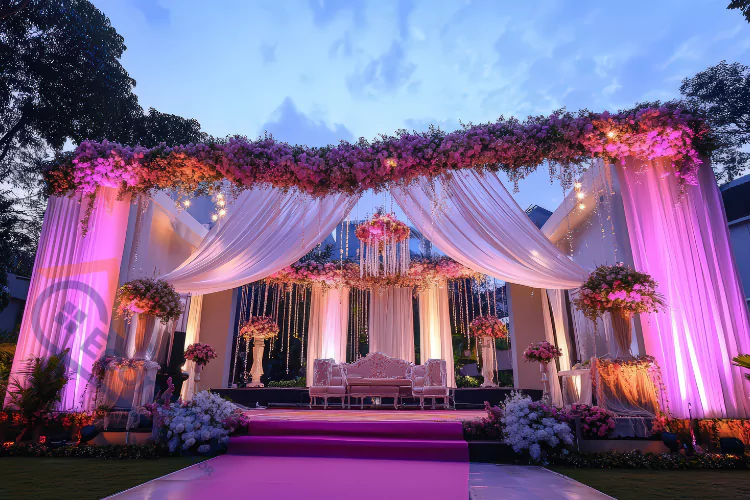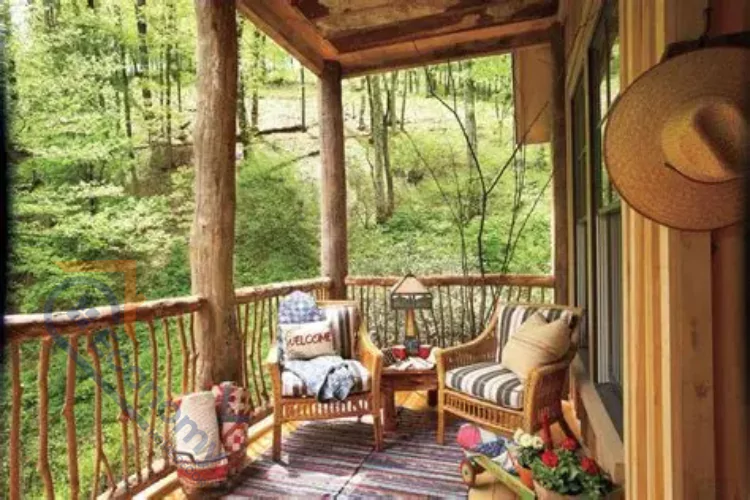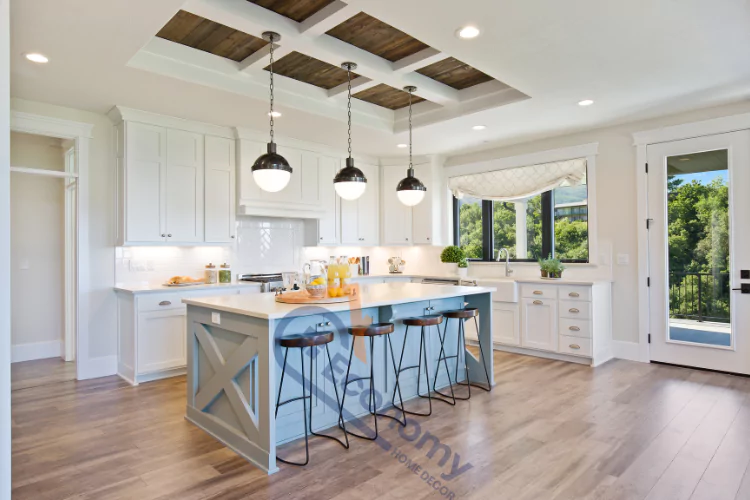Choosing outdoor furniture can feel overwhelming—there are so many styles, materials, and prices to consider. But picking pieces that truly last doesn’t have to be a guessing game. With a little know-how about which materials stand up to sun, rain, and wear—and how your specific space and habits play a role—you can find furniture that stays comfortable and looking good for years. This guide breaks down what really matters so you can shop smart and enjoy your patio without worry.
To choose outdoor furniture that lasts, prioritize materials known for durability and weather resistance such as aluminum, teak wood, or high-quality resin wicker. Additionally, consider your local climate impact, maintenance requirements, and opt for protective covers and proper storage to extend the lifespan of your furniture.

Evaluating Your Patio Needs
The very first step in selecting outdoor furniture that lasts is to honestly evaluate your patio space. It’s tempting to buy big, beautiful pieces without considering whether they actually fit comfortably in your outdoor area. Picture this: you might have a sprawling sectional set that looks amazing in the showroom but leaves you cramped with nowhere to walk or place other essentials like grills or planters. Measuring your patio precisely isn’t just about square footage—it’s about imagining the flow of daily life there. You need clear pathways for walking and easy access to doors or garden areas. Leaving at least 24 to 36 inches of clearance around furniture zones is smart so no one feels trapped.
Beyond dimensions, consider the shape of your patio too. Narrow rectangular spaces invite slim benches or bistro sets, while wide open decks can accommodate larger conversation groups or dining sets. A well-measured and planned layout helps avoid overcrowding and ensures that your furniture works toward comfort rather than crowding.
As spatial planning settles in place, the way you intend to use your patio should steer the types of pieces you bring home.
Your usage patterns heavily influence both style and durability needs. Are you someone who loves hosting lively dinner parties under the stars? Then a sturdy dining set designed for many guests with weather-resistant cushions probably tops your list. But maybe your ideal weekends are spent lounging solo or with a partner, reading on a plush chaise or rocking chair. This calls for softer seating options designed for leisure rather than company.
Furniture tailored for entertaining often requires modularity—think stackable stools or sectionals that can be rearranged based on occasion—while casual retreat settings prioritize comfort through plush cushions and footrests.
When planning your setup, also factor in how often the furniture will be used year-round versus seasonally. Frequent daily use means opting for materials that resist wear and tear easily, like aluminum frames with high-quality Sunbrella cushions that clean up effortlessly and resist UV fading. Less frequent use might allow for trendier pieces but always weigh how well they withstand local conditions.
Knowing why and how you’ll use outdoor furniture naturally leads to another crucial consideration: the local climate.
Weather is the silent force that determines just how long your carefully selected furniture will last outside. If you live in a sunny region where UV rays hammer surfaces daily, fabrics fade, plastics crack, and colors dull quickly without proper UV-resistant coatings. Furniture made with Sunbrella fabrics or powder-coated aluminum offers exceptional defense here.
In wetter climates with seasonal rains or snowfalls, moisture resistance becomes critical; woods like teak or polywood synthetics fare better because they repel water naturally and avoid rot. Rustproof metals like wrought iron are excellent choices if periodically maintained and repainted against corrosion.
Even within a single day’s cycles, temperature swings and humidity changes can degrade little-used cushions or cause metal joints to loosen over time. A good rule of thumb: when investing in costly outdoor sets, match the construction materials directly to your environment’s quirks and plan storage solutions during harsher months—whether it’s covered patios, protective weatherproof covers, or indoor storage during winter freezes.
After sharpening these assessments—space, usage, and climate—you’re ready to make informed material selections that ensure years of enjoyment without compromise.
Weather-Resistant Materials
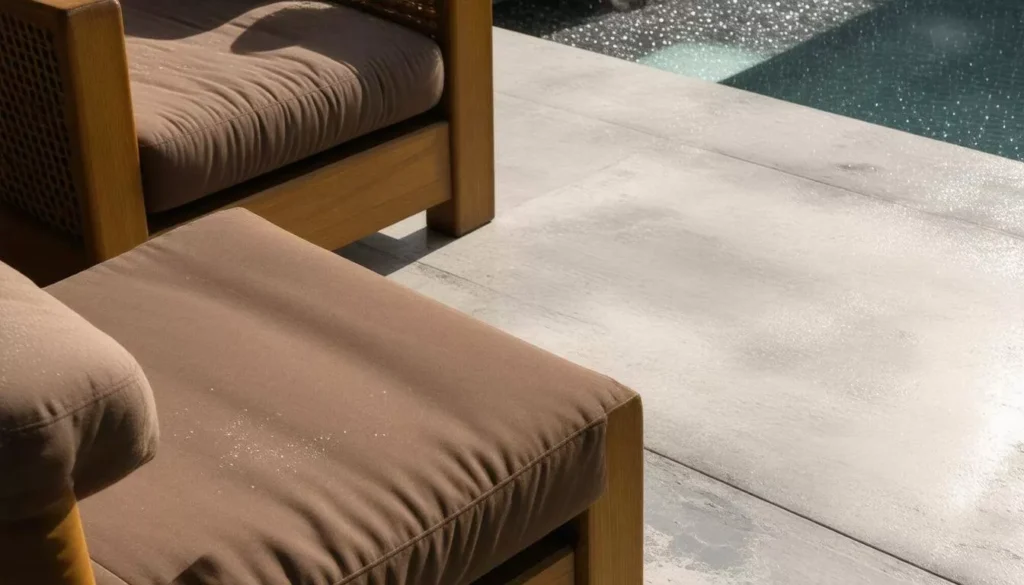
Choosing the right material for outdoor furniture is not just about looks; it sets the stage for how long your pieces will last with minimal headaches. When a chair or table sits outside year-round, it faces an unrelenting assault: sun, rain, wind, temperature swings—you name it. Each material reacts differently under these stresses, and understanding their strengths and limits is crucial to making a smart pick.
Take aluminum, for instance. One of its superpowers is being lightweight yet incredibly resistant to rust. This makes it a favorite near pools or humid climates where moisture lingers. Thanks to powder coating and modern finishes, aluminum frames can maintain their fresh appearance for over a decade without sagging under corrosion. Still, because aluminum is light, it can sometimes shift in strong winds unless thoughtfully weighted or anchored—something often overlooked.
Then there’s teak wood, nature’s seasoned warrior for outdoor use. Teak’s dense grain rich in natural oils means water beads off its surface, preventing rot and insect damage. The story doesn’t end there; as time passes, teak gracefully ages into a silvery patina—a look many seek instead of the golden brown it starts with. That said, keeping teak looking fresh requires occasional sealing and cleaning to slow weathering and preserve its original glow. If maintenance feels like a chore, teak might demand more attention than synthetic options but rewards you with unparalleled warmth and elegance.
Resin wicker furniture combines style with practicality by mimicking classic rattan aesthetics but built from synthetic fibers engineered to resist UV fading and moisture damage. It’s highly favored for casual lounging areas exposed to direct sun since its colors won’t dull quickly like natural wicker would. However, resin wicker’s lifespan can vary widely from five to ten years depending on the quality of weaving and frame underneath—usually powder-coated aluminum—which must also be corrosion-resistant to truly last. Off-season protection or storage extends its life further.
| Material | Durability in Years | Maintenance Required |
|---|---|---|
| Aluminum | 10-15 | Minimal; occasional washing & check hardware tightness |
| Teak Wood | 20+ | Regular cleaning; periodic sealing or oiling |
| Resin Wicker | 5-10 | Cover during harsh weather; clean with mild soap |
Beyond these three popular options, some manufacturers use marine-grade stainless steel (316) for frames especially in coastal settings where salt air accelerates rust on lesser metals. While pricier, this choice guarantees exceptional corrosion resistance combined with sleek durability.
On the other hand, cheaper wrought iron or standard steel may look appealing initially but tend to suffer from rust and paint peeling after just one or two seasons outdoors unless meticulously maintained.
Of course, even the toughest materials won’t perform without sound construction principles: fully welded frames add rigidity compared to bolt-together designs prone to wobble; hardware must be stainless or galvanized to prevent failures; cushions should feature quick-dry fabrics and drainage channels so they don’t harbor mildew after rainstorms. These thoughtful details often separate temporary setups from truly enduring outdoor investments.
With a solid grasp of material choices that brave weather well, your attention can now turn naturally toward design and comfort considerations that balance longevity with everyday enjoyment.
Styles That Last
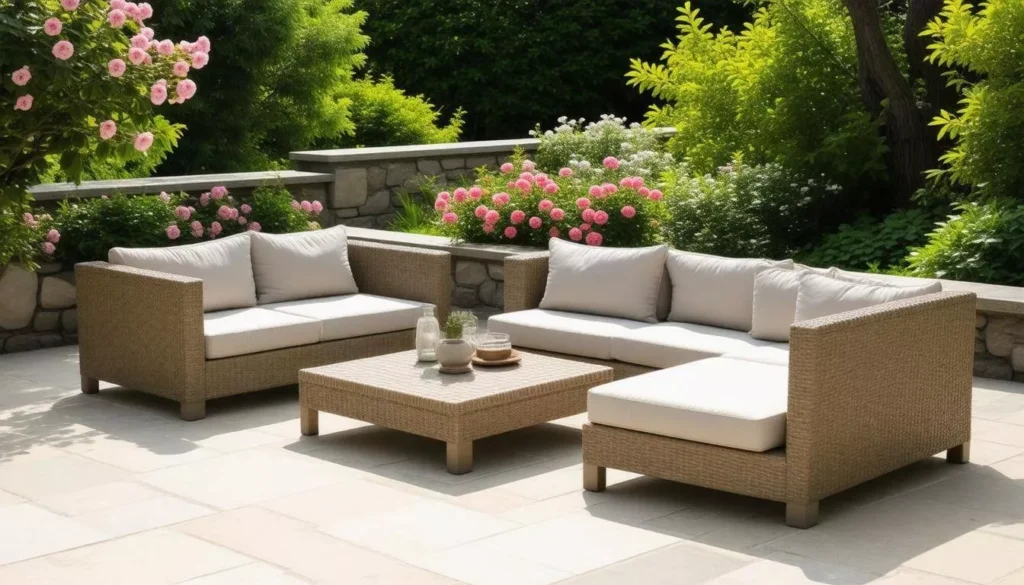
When choosing outdoor furniture, it’s easy to get dazzled by flashy, trendy designs. Yet, while these pieces might catch the eye today, their charm often fades as tastes evolve and trends shift. Classic styles, on the other hand, have a quiet strength—they maintain their appeal season after season, year after year. This enduring quality not only preserves the beauty of your outdoor space but also saves you from frequent replacements caused by changing fashions.
The challenge lies in balancing personal expression with practical longevity. Trendy furniture often introduces bold colors, unusual shapes, or innovative materials that can excite any outdoor enthusiast. However, these very features risk feeling outdated quickly, especially if you decide to refresh your patio’s look later on. Classic furniture embraces simplicity—think clean lines, sturdy forms, and muted tones—that naturally harmonize with a variety of settings. This timeless appeal is why many homeowners prefer classic designs despite the allure of trendiness.
To ensure your investment lasts beyond a few seasons, prioritizing versatility in style is essential. Choosing neutral colors such as black metal frames, natural wood hues like cedar or teak, or subdued earthy tones creates a foundation that adapts gracefully to evolving décor trends. Neutral shades act like a blank canvas—layered with cushions or accessories they transform easily without replacing the core pieces. This way, you can refresh your outdoor area’s look affordably and effortlessly over time.
Take metal outdoor chairs finished in matte black: their minimalist design complements almost any environment while resisting the visual fatigue that vibrant colors may introduce. Similarly, wooden furnishings in soft natural stains echo the surroundings and provide a warm texture that withstands fashion swings gracefully. The key is simplicity coupled with quality construction—classic forms made from durable materials to match their timeless aesthetics.
Of course, style also weaves into maintenance ease and durability. Furniture with uncomplicated shapes often harbors fewer nooks where dirt can hide and requires less intricate upkeep. This attribute further contributes to its lasting appeal by keeping it looking fresh longer without demanding special care routines.
Choosing outdoor furniture involves more than chasing current fads; it requires aesthetic foresight balancing comfort, function, and timelessness. Embracing enduring styles with adaptable design sets the stage for an inviting patio that maintains its charm day after day.
Understanding styles lays an important foundation, but assessing how well your chosen pieces stand up to time and weather conditions is just as crucial for long-term enjoyment.
Assessing Quality and Durability
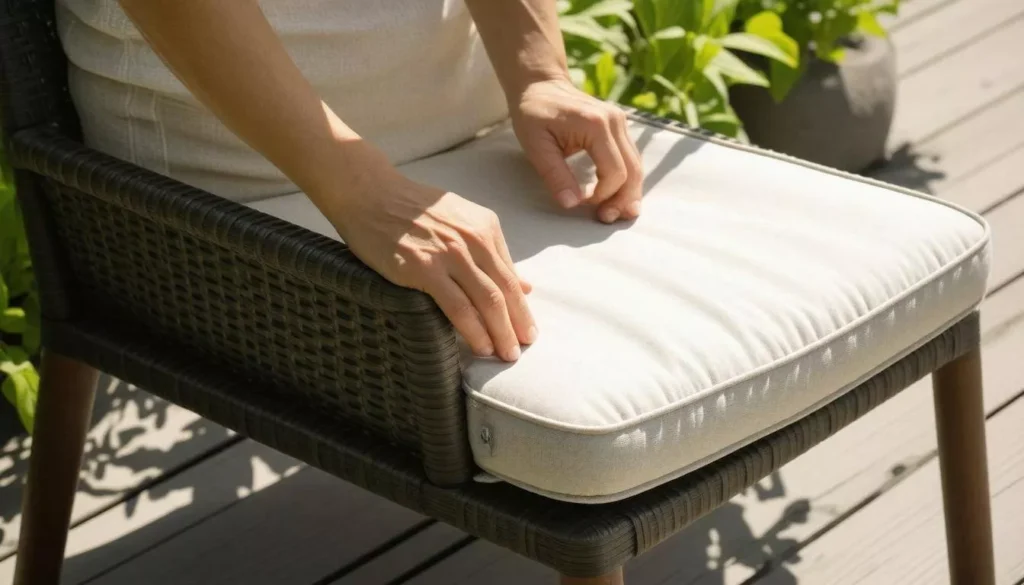
Not all outdoor furniture is crafted with the same level of care or materials, so knowing what to look for can make all the difference between a set that withstands seasons and one that quickly succumbs to wear. The journey begins by examining the construction. This means running your hands along the frame, observing how the joints come together. Reinforced corners and smooth welds tell you the manufacturer prioritized strength and longevity. On the other hand, if you spot visible screws sticking out or weak weld marks, it’s a red flag—these indicate shortcuts that will compromise stability over time.
Construction isn’t just about strength—it’s also about how it handles stress from weather and daily use. Outdoor furniture faces sun, rain, wind, and even occasional spills. Frames made from powder-coated aluminum, stainless steel, or sustainably sourced hardwood tend to perform better because they resist rust and rot. You’ll want to feel confident that your investment won’t need replacing after a single rainy season or under intense summer sun exposure. A solid frame is literally the backbone of long-lasting outdoor furniture.
Once you’ve sized up the frame, turn your attention to what keeps you comfortable—the upholstery.
Upholstery on outdoor pieces is where comfort meets resilience. High-quality cushions aren’t just soft; they’re wrapped in weather-resistant fabrics designed to fight fading, mildew, and moisture absorption. Sunbrella fabric has become something of an industry gold standard because it combines durability with easy maintenance—a necessity for any patio piece exposed to the elements. Running your fingers over cushion covers can reveal their quality: a tight weave and substantial feel usually mean they’ll hold up longer against tears and stains.
Consider also how cushions are filled. Quick-drying foam cores or polyester fillings help prevent mold buildup inside cushions—a silent destroyer of softness and longevity. You don’t want your cozy seating transforming into an uncomfortable sponge after a downpour. Fabric that zips off for washing adds another layer of practical care options worth seeking out.
Finally, no quality check is complete without putting weight into judgment.
The weight of outdoor furniture often tells a story about its durability—and its portability—that’s not immediately obvious from looks alone. Heavier pieces typically contain stronger materials such as dense hardwoods like teak or solid metals, which resist bending and fatigue through years of use. When you pick up or shift a chair or table and feel its substantial heft, you’re sensing that integrity firsthand.
However, there’s a balance to strike depending on your lifestyle. If you love rearranging or storing your furniture seasonally, excessively heavy sets can become a burden rather than a benefit. Lighter pieces made from composite materials or aluminum offer ease of movement but may sacrifice some rigidity or warmth in feel. This is why understanding your own needs—whether permanence or flexibility—is part of assessing durability smartly.
Here’s a quick comparison guide based on material characteristics related to weight and durability:
| Material | Weight | Durability | Maintenance Needed |
|---|---|---|---|
| Teak Wood | Heavy | Excellent resistance to decay | Regular oiling keeps color vibrant |
| Powder-coated Aluminum | Lightweight | Rust-resistant but less sturdy | Wipe clean occasionally |
| Wicker/Rattan (Synthetic) | Light to Medium | Weatherproof synthetic fibers | Wash down with soap |
| Stainless Steel | Heavy | Highly durable, rust-resistant | Minimal; polish for finish |
| Composite Materials | Light | Good weather resistance | Clean with mild detergent |
“Always factor in both construction quality and material type,” experts at Patio Productions advise in their 2025 patio trends report, reminding us that durability extends beyond appearance.
Invest time in feel — feel the frame’s sturdiness, touch the upholstery’s texture, gauge the weight—and weigh those impressions against how you intend to use your space throughout seasons. Quality isn’t only about expensive brands; it’s about smart choices rooted in understanding materials and craftsmanship. This informed approach will serve not just aesthetics but comfort and longevity too.
Armed with these criteria for assessing sturdiness and design durability, it becomes easier to focus on selecting pieces that not only last but enhance outdoor living experiences with lasting comfort and practicality.
Comfortable and Practical Choices
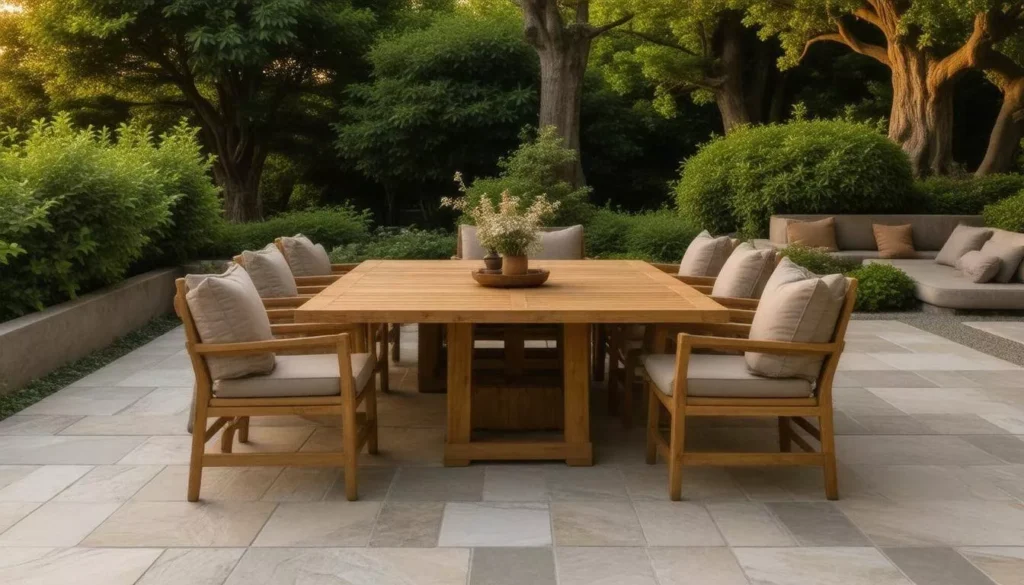
When it comes to outdoor furniture, comfort isn’t just about sinking into a soft cushion — it’s about how the design supports you for hours of relaxed enjoyment. Ergonomics play a larger role than many realize. Chairs with contoured seats and backrests encourage better posture, which means fewer aches after long dinners or slow afternoons spent soaking up the sun. A chair that hugs your natural curves can surprisingly transform your outdoor experience from merely pleasant to downright luxurious.
Beyond the seat itself, armrest height matters. Ideally, they should sit around 7 to 9 inches above the seat, allowing your arms to rest comfortably without strain. The inclination of backrests also affects comfort; a slight recline between 100 and 110 degrees typically offers the perfect balance between support and relaxation. These subtle considerations add up—in essence, comfortable outdoor furniture mimics what you’d seek indoors but with added resistance to weather forces.
Of course, comfort isn’t the only factor in your decision-making process. In an outdoor setting, where space might be limited and weather unpredictable, practicality can make or break your satisfaction with a set.
Consider furniture that packs more than one purpose — built-in storage is a game changer for patios and decks that lack extra space. Ottomans with hidden compartments are especially popular because they combine seating with storage for cushions, blankets or even garden tools. By maximizing utility through smart design, these pieces keep your outdoor area tidy and functional without cluttering it.
Storage-enabling furniture also protects items from exposure when not in use. Since cushions need to be kept dry or at least aired regularly to prevent mildew buildup, having quick access storage simplifies maintenance dramatically. Plus, it means you don’t have to schlep everything inside every time a rain cloud appears on the horizon. This adaptability saves effort and extends the life of your accessories.
When off-season comes around or if you have limited patio space, foldability becomes another important aspect of practicality.
Foldable tables and chairs offer supreme flexibility by shrinking down easily when not needed, freeing up significant space. This feature is ideal not only for small balconies or urban patios but also for households that want to protect their furniture during harsh winters or rainy spells. It’s no surprise that foldable designs often last longer simply because they spend less time exposed to damaging elements.
However, not all foldable furniture is created equal. Look for sturdy locking mechanisms that ensure stability when in use but don’t complicate folding. Materials like powder-coated aluminum marry light weight with durability—perfect combos for frequent handling without wear or rust problems. Prioritize quality hinges and joints over cheap metals that could bend or seize up quickly.
Thinking about these functional details alongside basic aesthetics helps you get the most out of every dollar spent on outdoor furnishings. After all—comfortable seating that doesn’t fit well on your porch or a beautiful dining set without a storage solution can quickly become frustrating rather than enjoyable.
Always measure your available space carefully before committing to larger sets, and don’t overlook features like cushion thickness (aim for foam density between 1.8 to 2.5 lbs/ft³) and fabric UV resistance (Sunbrella fabrics rated for 200+ hours minimize fading). These small differences significantly affect comfort longevity outdoors.
Investing in practical, ergonomic outdoor furniture means creating spaces where friends linger longer, and lazy weekends feel truly recharging—proof that good design serves both body and lifestyle beautifully.
Understanding these fundamental choices is just the start; maintaining your investment properly ensures these pieces continue to enrich your outdoor living experience for years to come.
Maintenance Tips for Longevity

Regular maintenance is the quiet hero behind furniture that withstands time and weather without losing its charm. It’s easy to overlook because outdoor furniture is made to endure elements, but neglect allows dirt buildup, fading, and wear to sneak in slowly. Imagine your favorite aluminum patio set sitting untouched through a harsh summer sun or icy winter nights; it might look fine now, but over time, neglect can cost you hours of enjoyment and dollars in replacement.
As with anything valuable, starting with gentle cleaning routines pays dividends. Use mild soaps combined with soft brushes or microfiber cloths to wipe down surfaces, steering clear of harsh chemicals or abrasive tools which can scratch or erode finishes. For example, aluminum frames benefit immensely from regular washing every few weeks—just soap and water followed by a thorough rinse ensures no residue attracts dirt or accelerates corrosion.
Remember that soap residue often hides in corners or joints, so take the time to rinse completely. This keeps grime from building up beneath the surface and protects delicate coatings like powder-coated metals or varnished wood.
Seasonal Care
When seasons shift dramatically, especially in places with cold winters and hot summers, extra precautions are needed. Protective covers serve as your furniture’s shield, fending off rain, snow, and ultraviolet rays that fade colors and dry out fabrics. But covering isn’t all—moisture trapped beneath covers can invite mildew or cause rust under paint layers, so look for breathable covers designed to shed water without sealing in humidity.
Fabric cushions require their own ritual. They should be fully dry before going into storage spaces or deck boxes to thwart mold growth—a common outdoor menace. Applying a waterproof spray like those endorsed by Sunbrella provides an additional defense, repelling stains and moisture while allowing breathability. The key is consistent attention—not just when rainstorms are predicted but as part of routine seasonal preparation.
Regular Inspections
Beyond cleaning and seasonal shifts lies the value of consistent inspection. It’s tempting to set your furniture aside once it looks good on the surface, but hidden wear-and-tear can unravel comfort and safety before you notice it visibly. Loose bolts on wrought iron chairs early on might save you from a dangerous collapse during an evening gathering later.
Check welded seams for signs of rust or cracks; scan wooden surfaces for drying cracks or peeling finish; examine cushions for thinning areas or stains that seed mold. Addressing these small issues promptly—tightening screws here, applying rust-resistant paint there—transforms what could be costly repairs into simple weekend tasks.
| Maintenance Aspect | Recommended Frequency | Tools/Products Needed |
|---|---|---|
| Surface Cleaning | Every 2-4 weeks | Mild soap, soft brush/cloth |
| Fabric Waterproofing | Every 3 months | UV-resistant waterproof spray |
| Cushion Inspection | Monthly during use | Mild detergent for cleaning |
| Screw/Bolt Tightening | Every 6 months | Screwdriver/wrench |
| Rust Inspection & Touch-up | Every 3 months | Rust-resistant primer & paint |
| Seasonal Storage Prep | Annually (before winter) | Furniture covers; dry storage space |
A habit of attentive care wins out over reactive fixes every time. Preserving your backyard retreat from subtle wear caused by sun and rain lets you enjoy more moments—whether sipping coffee in spring sunshine or hosting friends under summer stars—with peace of mind knowing your furniture remains both stylish and sturdy.
Building on this foundation of upkeep, understanding how to navigate shopping options will further empower your outdoor living experience with pieces that combine durability and design seamlessly.
Smart Shopping Tips
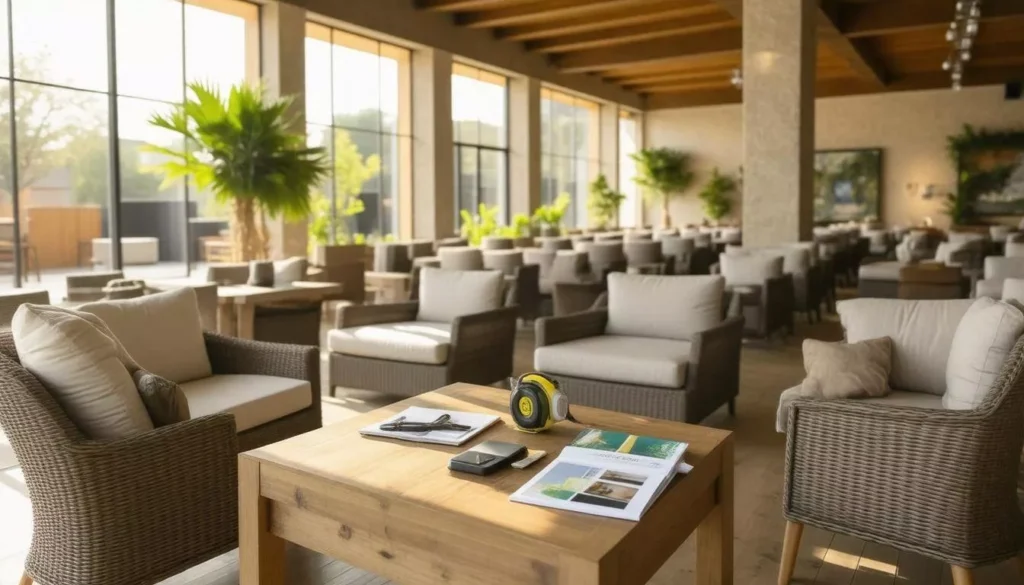
Timing your purchase plays a surprisingly big role in finding patio furniture that lasts without breaking the bank. Toward the end of summer and into early fall, retailers often slash prices to make room for new inventory. This means you can score substantial discounts on high-quality sets during these end-of-season sales—sometimes as much as 40 to 50 percent off. Being patient and planning your furniture shopping around these periods lets you buy premium pieces made with durable materials like marine-grade stainless steel or synthetic wicker but at a fraction of their original cost.
Knowing when to buy is only half the game; smart buyers also invest time comparing offers. Prices vary widely across different sellers, both online and in brick-and-mortar stores. Use price tracking tools and apps to monitor trends over weeks or months, so you catch peak discounts rather than impulsively grabbing items at full price. Reading customer reviews is equally crucial because quality can differ even among similarly priced products.
For example, cushions using nano-coated fabrics like Sunbrella® are often praised for withstanding years of sun exposure without fading—a feature not always obvious in product descriptions.
When browsing options, pay close attention to warranty coverage. A generous warranty signals a manufacturer’s confidence in the durability of their product. It also offers peace of mind against manufacturing defects or early wear.
Outdoor furniture warranties tend to range from one year to as much as ten years for high-end pieces. Choosing items with multi-year warranties can be a small upfront cost that saves you considerable headaches—and replacement expenses—down the road.
| Best Purchase Windows | Tools for Success | Key Warranty Durations |
|---|---|---|
| Late summer & early fall | Price trackers, user reviews, comparison shopping | Multi-year coverage recommended |
Combining timing, thorough comparison, and warranty awareness helps you avoid common pitfalls like buying cheap materials that degrade quickly or settling for designs that don’t meet your lifestyle needs.
While scouting holiday sales such as Memorial Day or Labor Day can yield tempting bargains, remember that not all discounts carry the same value if the underlying quality suffers.
Once you’ve mastered these smart shopping strategies, pairing them with proper care will ensure your outdoor furniture serves beautifully through many seasons.
By blending patience, research, and attention to quality guarantees, you equip yourself to make purchases that bring long-lasting comfort and style to your outdoor spaces without overspending.




